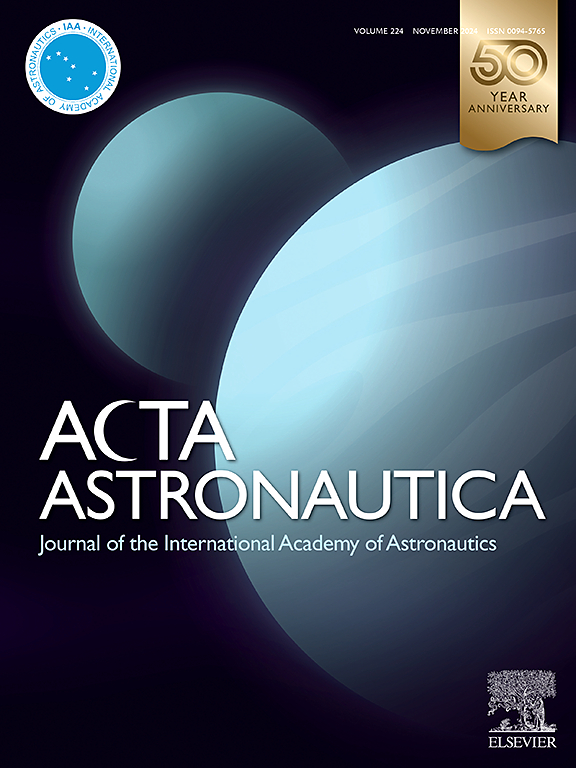Penetration based lunar regolith thermal conductivity inversion: Method and verification
IF 3.1
2区 物理与天体物理
Q1 ENGINEERING, AEROSPACE
引用次数: 0
Abstract
Based on the temperature change data of the penetrator, to achieve in-situ detection of the thermal conductivity of the lunar regolith profile, it is necessary to establish a heat conduction model between the penetrator and the lunar regolith. This study simplifies the heat conduction model of the complex shaped penetrator through simulation analysis results. Then, we proposed a thermal conductivity inversion method based on the transient thermal cylinder source model. The thermal diffusion test was carried out under normal temperature and pressure on a standard reference object with known thermal conductivity and the thermal conductivity inversion work was completed, which verified the feasibility of the inversion method. Then, we completed the thermal diffusion test of the penetrator and the lunar regolith simulant under the simulated low-temperature vacuum environment of the lunar surface, and carried out the thermal conductivity inversion of the lunar regolith simulant based on the thermal diffusion test data, which proved that the proposed thermal inversion method is applicable for the lunar regolith under the low-temperature vacuum. Finally, the thermal conductivity test was conducted on icy lunar regolith simulant with different water contents and a thermal diffusion test in a vacuum low-temperature environment was carried out. The thermal conductivity inversion was completed using the same method, which proved that the inversion method is suitable for icy lunar regolith simulant.
基于穿透的月球沉积物热导率反演:方法与验证
根据穿透器的温度变化数据,要实现对月球岩石剖面导热性能的原位探测,就必须建立穿透器与月球岩石之间的热传导模型。本研究通过模拟分析结果简化了复杂形状穿透器的热传导模型。然后,我们提出了一种基于瞬态热圆柱源模型的导热反演方法。在已知导热系数的标准参考物体上进行了常温常压下的热扩散试验,并完成了导热系数反演工作,验证了反演方法的可行性。然后,我们在模拟的月面低温真空环境下完成了穿透器和月球岩石模拟物的热扩散试验,并根据热扩散试验数据对月球岩石模拟物进行了热导率反演,证明所提出的热反演方法适用于低温真空环境下的月球岩石。最后,对不同含水量的冰质月球岩石模拟物进行了导热试验,并进行了真空低温环境下的热扩散试验。用同样的方法完成了热导率反演,证明反演方法适用于冰质月球岩石模拟物。
本文章由计算机程序翻译,如有差异,请以英文原文为准。
求助全文
约1分钟内获得全文
求助全文
来源期刊

Acta Astronautica
工程技术-工程:宇航
CiteScore
7.20
自引率
22.90%
发文量
599
审稿时长
53 days
期刊介绍:
Acta Astronautica is sponsored by the International Academy of Astronautics. Content is based on original contributions in all fields of basic, engineering, life and social space sciences and of space technology related to:
The peaceful scientific exploration of space,
Its exploitation for human welfare and progress,
Conception, design, development and operation of space-borne and Earth-based systems,
In addition to regular issues, the journal publishes selected proceedings of the annual International Astronautical Congress (IAC), transactions of the IAA and special issues on topics of current interest, such as microgravity, space station technology, geostationary orbits, and space economics. Other subject areas include satellite technology, space transportation and communications, space energy, power and propulsion, astrodynamics, extraterrestrial intelligence and Earth observations.
 求助内容:
求助内容: 应助结果提醒方式:
应助结果提醒方式:


